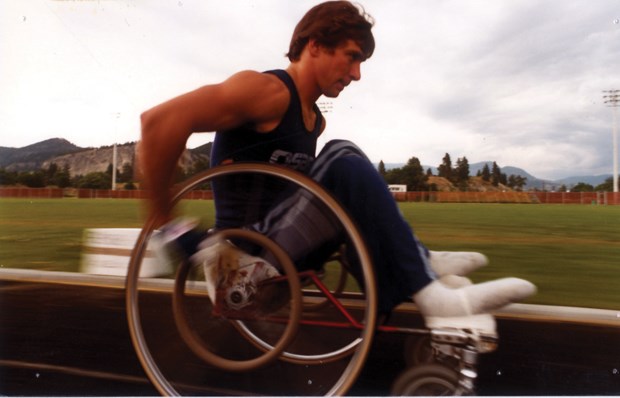It’s been 27 years since Richmond’s Rick Hansen concluded his Man in Motion World Tour. And in that time there have been many accomplishments in breaking down barriers to accessibility, but there is still a long way to go.
“It’s hard to believe 27 years have rolled by so quickly and every time this day comes forward it reminds me and my team about the original journey and the fact our vision was far beyond the tour,” said Hansen. “Little did we know that it would be the beginning of an ultra marathon of social change.”
In March 1985, Hansen wheeled around the world, completing the equivalent of three marathons every day through 34 countries. The two-year tour raised $26 million for spinal cord injury research, rehabilitation and sport.
Today, Hansen heads up the Rick Hansen Foundation, which since 1988 has funded research to provide better care and outcomes for those who sustain a spinal cord injury, and contributed to improving accessibility for people with disabilities.
The journey over the past 27 years to address those issues is one Hansen said has spread to include an ever-growing circle of people with a similar vision, and praised those in this city for their efforts.
“When you look at anniversary dates, you measure progress and achievements, and in a city like Richmond, we’ve been pretty blessed to see a lot of progress here,” he said. “There’s a lot of active representatives of the community in the disability centre who advocate and encourage greater accessibility.”
Evidence of that, he said, can be seen in increased curb cuts for wheelchairs, (disabled access) parking, and more accessible transit. Plus, there remains Olympic legacy buildings that were constructed with accessibility in mind.
“You look at the Richmond Oval, it’s been a model for other places across Canada and the world to get it right in the design phase, so you don’t have to tie up a lot of lengthy and costly retro-fitting when you see a problem once something is built,” Hansen said.
Still, challenges do remain in a world where the number of people with disabilities is expected to increase.
According to the World Health Organization, there are 1 billion people with disabilities worldwide, with 550,000 in B.C. And by 2035, one in five Canadians will be classified as having some form of disability, Hansen said, adding the driving force behind that is the aging Baby Boomer population.
“So, there’s a compelling reason, not just from a legal, moral or human rights perspective, but from a economic and political force to get this right so people can continue to be fully engaged in all aspects of society,” Hansen said.
That’s why he has helped spearhead an on line, accessibility rating system called Planat, which takes advantage of information sharing capabilities of today’s digital world — one of the great advances Hansen said was never fully envisioned when he completed his tour that can also benefit spinal cord research efforts.
“We can accelerate that progress much more dramatically,” Hansen said.



